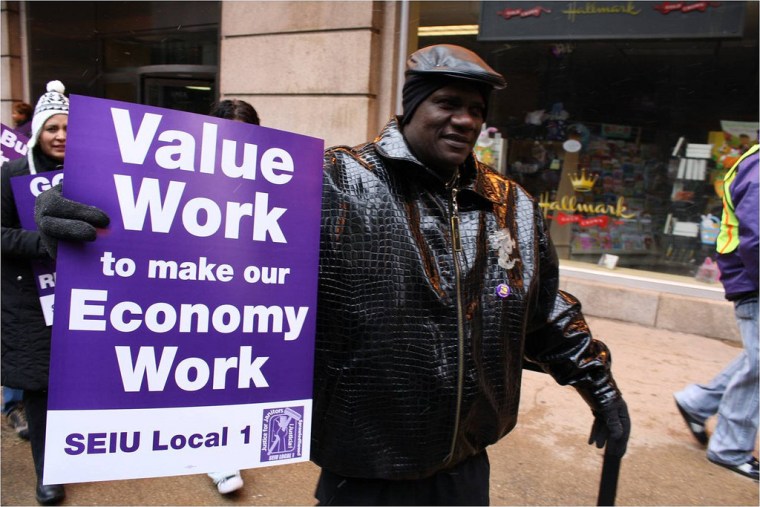The Indiana Legislature will consider a bill in the new year that would effectively ban union shops and force unions into a much weaker position for collective bargaining. With a wary eye on what happened in Wisconsin, Ohio and their own state this year, officials in Indiana have announced that they will limit the number of people who can be inside the state capitol building.
The Indiana State Police, Indiana Department of Homeland Security and Indiana State Fire Marshall's Office have decided to cap the number of people who can be inside the Statehouse building in Indianapolis at 3,000. That number includes the 1,700 employees who work at the building.
That leaves room for 1,300 people. Protests over a failed anti-union bill in 2011 drew as many as 8,000 people, the paper says. So much for that in 2012.
As one Indiana Republican told the Kokomo Perspective, the state needs to curb the power of the unions so it can lower wages and attract manufacturers. He had a hard time proving that the state had lost companies because of union wages.
From next door in Kentucky comes the story of companies -- including G.E., which owns a chunk of us -- finding that rising wages in China have made it attractive to bring manufacturing jobs back the States. To make themselves more attractive, unions have been agreeing to split-track wages, with the longer-term members keeping their comfortable pay and the newer ones pocketing much less.
A 62-year-old worker told the New York Times it's no big deal.
The younger workers still get annual raises, he noted, and by the time they top out, he and his peers — the oldest baby boomers — "won't be here any longer to remind them of what they are missing."Linda Thomas, 37, one of the first to be hired in 2005 under the new arrangement, amends that explanation. Her hourly wage, $18.19, has almost topped out, although it is nearly $14 an hour less than Mr. Masden's. But she keeps silent. Too many unemployed people, she explained, would clamor for her job and her wage if she were to protest."You don't want to rock the boat," Ms. Thomas said. "You take a chance on losing everything you have if you do."
Manufacturing is coming back, the Times says, just not the wages. The new watchword is the "globally competitive wage," which is maybe works better when it matches your local cost of living.
(Earlier: The Right to Work for less, or more, or something in Indiana)
